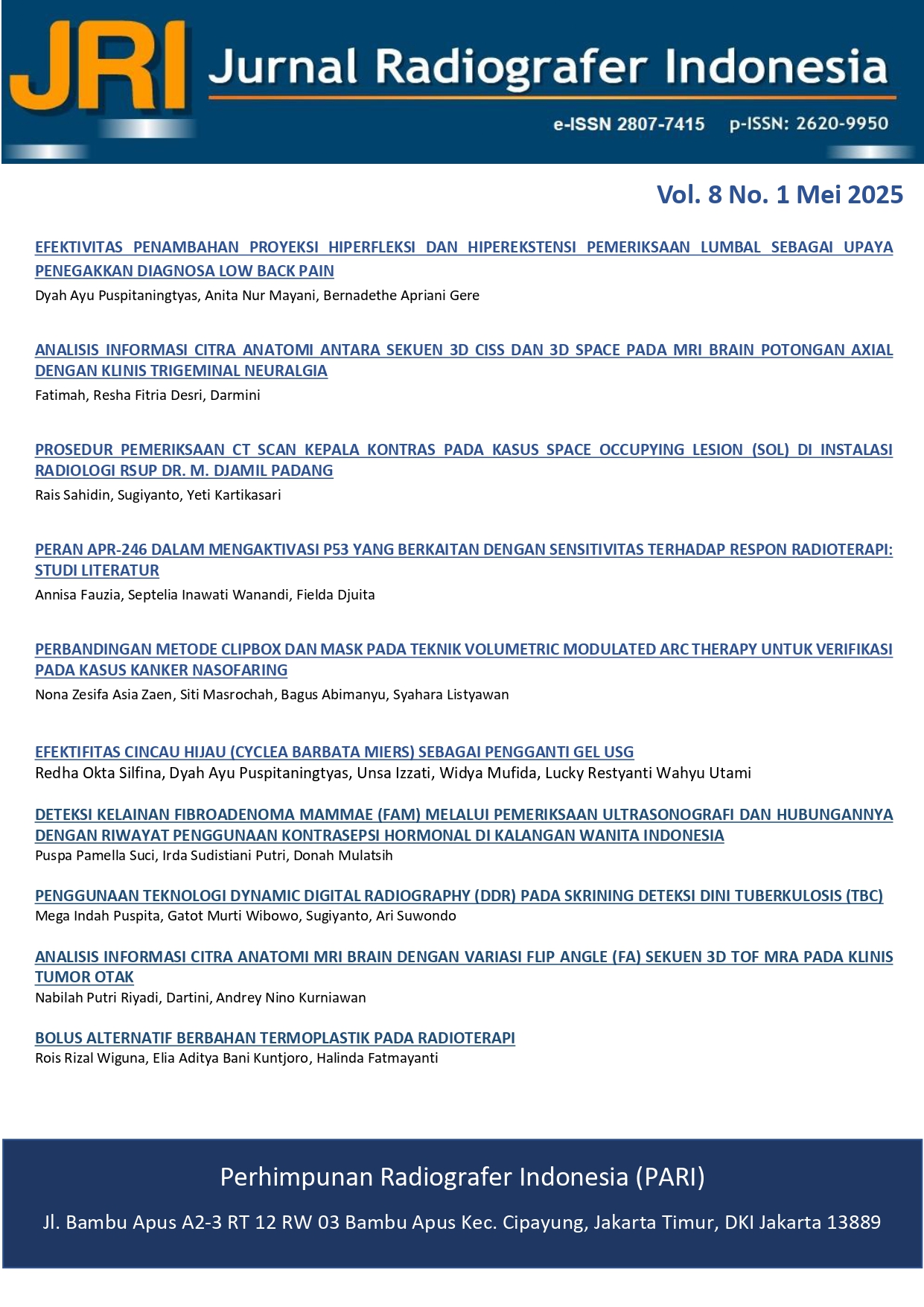Penggunaan Teknologi Dynamic Digital Radiography (DDR) Pada Skrining Deteksi Dini Tuberkulosis (TBC)
Abstract
Background: Tuberculosis is a major public health problem in Indonesia and a global challenge. TB in Indonesia ranks third after India and China, with 824,000 cases and 93,000 deaths per year, or 11 deaths per hour. TB sufferers are not fully aware of the right treatment. Chest radiography or commonly called chest X-ray is one of the main methods used in TB screening. The latest digital radiography technology, Dynamic Digital Radiography (DDR), combines the principles of conventional radiography with advanced technology to produce more dynamic and detailed images. In this study, a chest X-ray examination will be carried out as an early detection screening for TB by utilizing the latest features in digital radiography technology, namely Dynamic Digital Radiography (DDR).
Methods: The type of research is quantitative exploratory approach. Research Population: TB patients using portable mobile X-Ray equipment. Research Sample: Image results of TB screening patients with portable mobile X-Ray totaling 3 patients. Research Steps: preparing research tools and objects, positioning patients for thorax radiography projection, exposure is done during full inspiration and holding breath. Data processing and analysis techniques are carried out by editing, data entry and tabulation.
Results: DDR is able to provide radiographic images with a higher level of sharpness and detail than conventional radiography. DDR is able to show small lung lesions that are difficult to see on conventional images. Small lesions or nodules that indicate the possibility of TB infection are detected more clearly in DDR, DDR is often integrated with AI (Artificial Intelligence) because it can help detect patterns and characteristics of TB disease and is able to show TB risk scores to help diagnose faster and more accurately.
Conclusions: The results showed that DDR detected 100% of abnormalities, while conventional radiography detected 66.6% of abnormalities. This shows that DDR has a significant advantage in terms of detecting smaller or hidden abnormalities, which are often missed in conventional examinations.
Copyright (c) 2025 Mega Indah Puspita, Gatot Murti Wibowo, Sugiyanto Sugiyanto, Ari Suwondo

This work is licensed under a Creative Commons Attribution-ShareAlike 4.0 International License.







